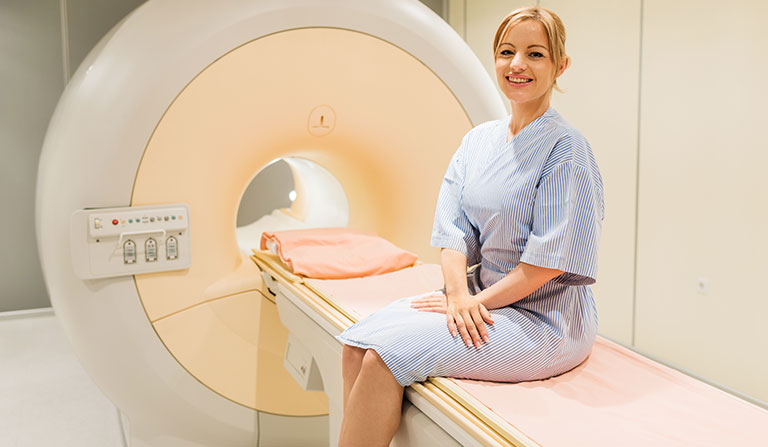This is a test that uses magnets to create an image of the body
The test is done with a person laying on a bed that moves through a donut-like machine. You must lay still in the machine to reduce the fuzziness of the picture.
MRI of the Prostate
Since about 2015, there have been major advances in the MRI technology providing sharper and clearer pictures of the organs especially of the prostate gland.
Broward Urology Center physicians encouraged and facilitated the local Broward hospitals in adopting the latest prostate imaging software and have our radiologists trained in interpreting these images to help us detect and target suspicious lesions within the prostate.
This imaging provides us with a roadmap in targeting tumors with a biopsy as well as aiding in the staging prostate cancer and surgical plans.
Majority of our prostate cancer patients undergo this test in helping us make a diagnosis or in treatment planning.
The current 3Tesla (stronger magnet) of the MRI machine does not require any rectal probes for the test to be done as was used in the older technology.

Advantages
- An MRI does not expose you to any radiation.
- In urology, the test does a good job showing the kidney anatomy and blood supply.
- It is an excellent test for evaluation of kidney cysts and the adrenal gland.
- Currently the MRI imaging is becoming an excellent tool at evaluating the prostate in the field of prostate cancer.
Disadvantages
- The machine is very loud and thus you have to wear ear muffs to block the noise.
- The donut shaped machine is small thus making some people a bit more claustrophobic.
- Some MRI test require IV dye to see the organs better. Patients with very poor kidney function may have serious skin condition with exposure to the dye, otherwise, the IV dye used in MRI is different than the one used in CT scans and may be given to those wit mild to moderate kidney dysfunction without affecting the kidneys.
- The image quality may be severely affected if a person fails to stay still inside the machine.
- MRI test usually is a long test and may take between 40-80 minutes to do depending on what body part is being tested.
- Since MRI is a magnet device, patients with certain metal implants or metal objects like shrapnel are not able to have the scan done. Those include patients with: cochlear (ear) implant, some types of clips used for brain aneurysms, some types of metal coils placed within blood vessels and nearly all cardiac defibrillators and pacemakers.
- Some implanted devices require a short period of time after placement (6 weeks) before being safe for MRI examinations. Examples include but are not limited to: artificial heart valves, implanted drug infusion ports, artificial limbs or metallic joint prostheses, implanted nerve stimulators, metal pins, screws, plates, stents or surgical staples.

